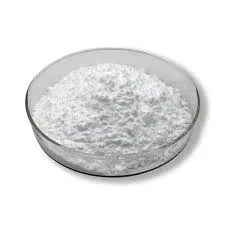
Dec . 04, 2024 10:30 Back to list
Exploring Ashland's Hydroxyethyl Cellulose Applications and Benefits in Various Industries
Understanding Ashland Hydroxyethyl Cellulose Applications and Benefits
Hydroxyethyl cellulose (HEC) is a unique, non-ionic cellulose ether derived from natural cellulose. Ashland, a prominent player in the production of specialty chemicals, has developed a range of HEC products that serve various industries including personal care, pharmaceuticals, and construction. This article delves into the characteristics, applications, and benefits of Ashland hydroxyethyl cellulose, highlighting its significance in contemporary formulation processes.
What is Hydroxyethyl Cellulose?
Hydroxyethyl cellulose is formed through the etherification of cellulose, where ethylene oxide is reacted with cellulose to create a water-soluble polymer. This modification enhances the solubility and functionality of traditional cellulose, allowing for a diverse array of applications. Ashland's innovations in HEC production have led to a portfolio of products that exhibit exceptional performance characteristics.
Key Properties of Ashland Hydroxyethyl Cellulose
One of the most notable properties of Ashland HEC is its ability to thicken solutions without significantly altering their appearance. This quality makes it an ideal thickener for various formulations in personal care products such as shampoos, lotions, and creams. Moreover, HEC is known for its excellent water retention capacity and film-forming abilities, contributing to enhanced moisturizing and smoothing effects in skincare applications.
Another important property is its compatibility with a wide range of other ingredients and surfactants. This compatibility ensures that Ashland HEC can be easily integrated into formulations without compromising the stability or effectiveness of the final product. Additionally, it offers a high degree of shear stability, meaning it can maintain its functional properties even under mechanical stress.
Applications in Various Industries
The versatility of Ashland hydroxyethyl cellulose allows it to find applications in various sectors
ashland hydroxyethyl cellulose

1. Personal Care In cosmetics and skincare, HEC acts as a thickener, stabilizer, and emulsifier. Its ability to retain moisture makes it crucial in hydrating lotions and creams.
2. Pharmaceuticals Ashland HEC is used in drug formulations to improve viscosity and stability. Its gel-forming properties are particularly beneficial for topical applications and sustained-release systems.
3. Construction In the construction industry, HEC serves as a crucial additive in cementitious materials, enhancing workability and water retention. This is particularly valuable in tile adhesives, grouts, and joint compounds.
4. Food Industry Although primarily used in other sectors, HEC occasionally finds its way into food applications as a thickening agent for sauces and dressings, reflecting its versatility.
Environmental Considerations
Another commendable aspect of Ashland’s hydroxyethyl cellulose is its environmentally friendly profile. As a plant-derived polymer, HEC is biodegradable and provides an eco-conscious alternative to synthetic thickeners and stabilizers. This characteristic aligns with the growing consumer demand for sustainable and green products.
Conclusion
Ashland hydroxyethyl cellulose stands out as a multifunctional ingredient that meets the diverse needs of various industries. Its unique properties, such as excellent solubility, thickening capabilities, and compatibility with other ingredients, make it an invaluable asset in formulations ranging from personal care products to construction materials. As industries continue to prioritize innovation and sustainability, HEC's role is likely to expand, reinforcing its importance in modern applications. With the continuous evolution of formulations and the demand for high-performance ingredients, Ashland’s commitment to quality and sustainability remains a driving force in the development and application of hydroxyethyl cellulose.
-
Versatile Hpmc Uses in Different Industries
NewsJun.19,2025
-
Redispersible Powder's Role in Enhancing Durability of Construction Products
NewsJun.19,2025
-
Hydroxyethyl Cellulose Applications Driving Green Industrial Processes
NewsJun.19,2025
-
Exploring Different Redispersible Polymer Powder
NewsJun.19,2025
-
Choosing the Right Mortar Bonding Agent
NewsJun.19,2025
-
Applications and Significance of China Hpmc in Modern Industries
NewsJun.19,2025







